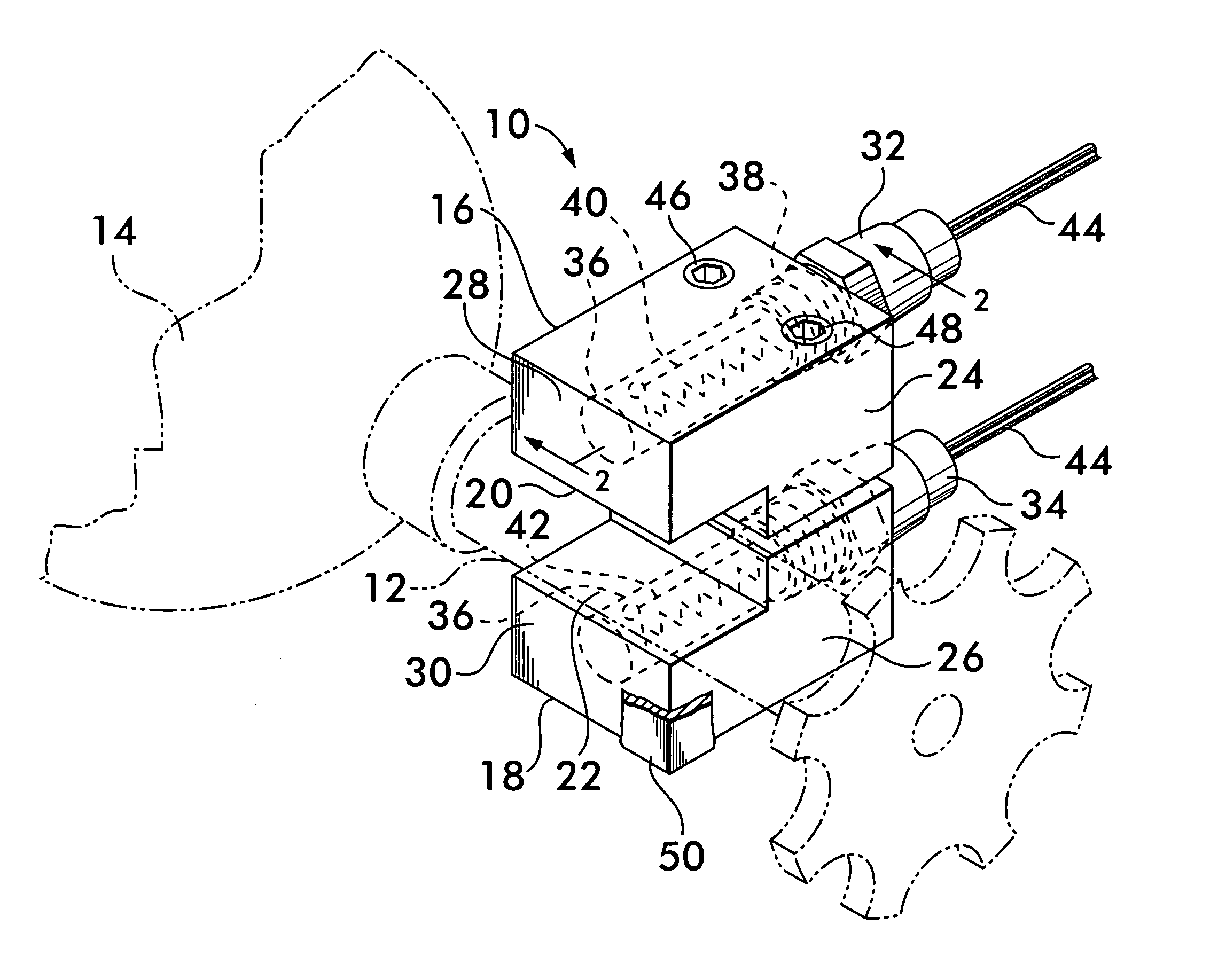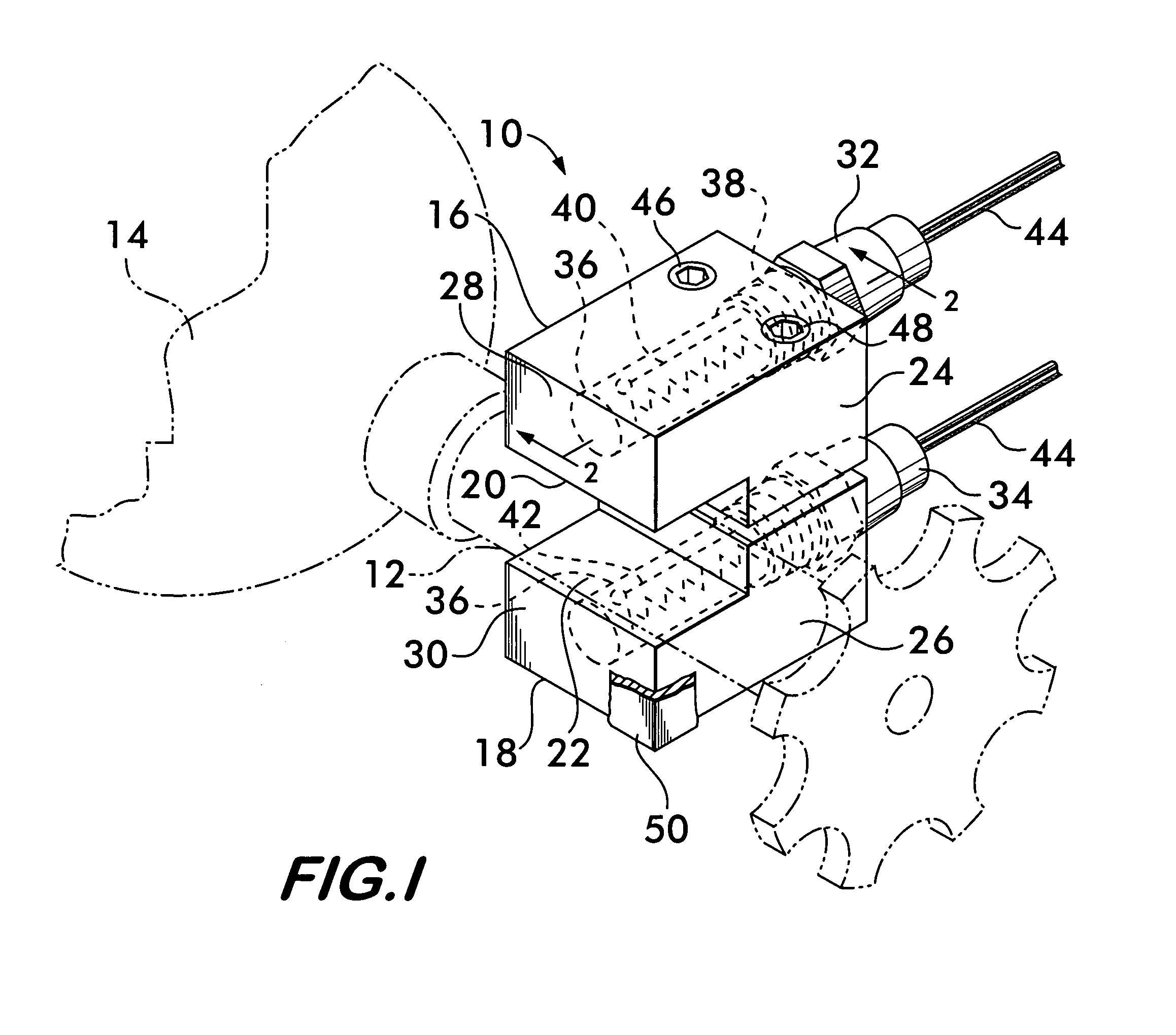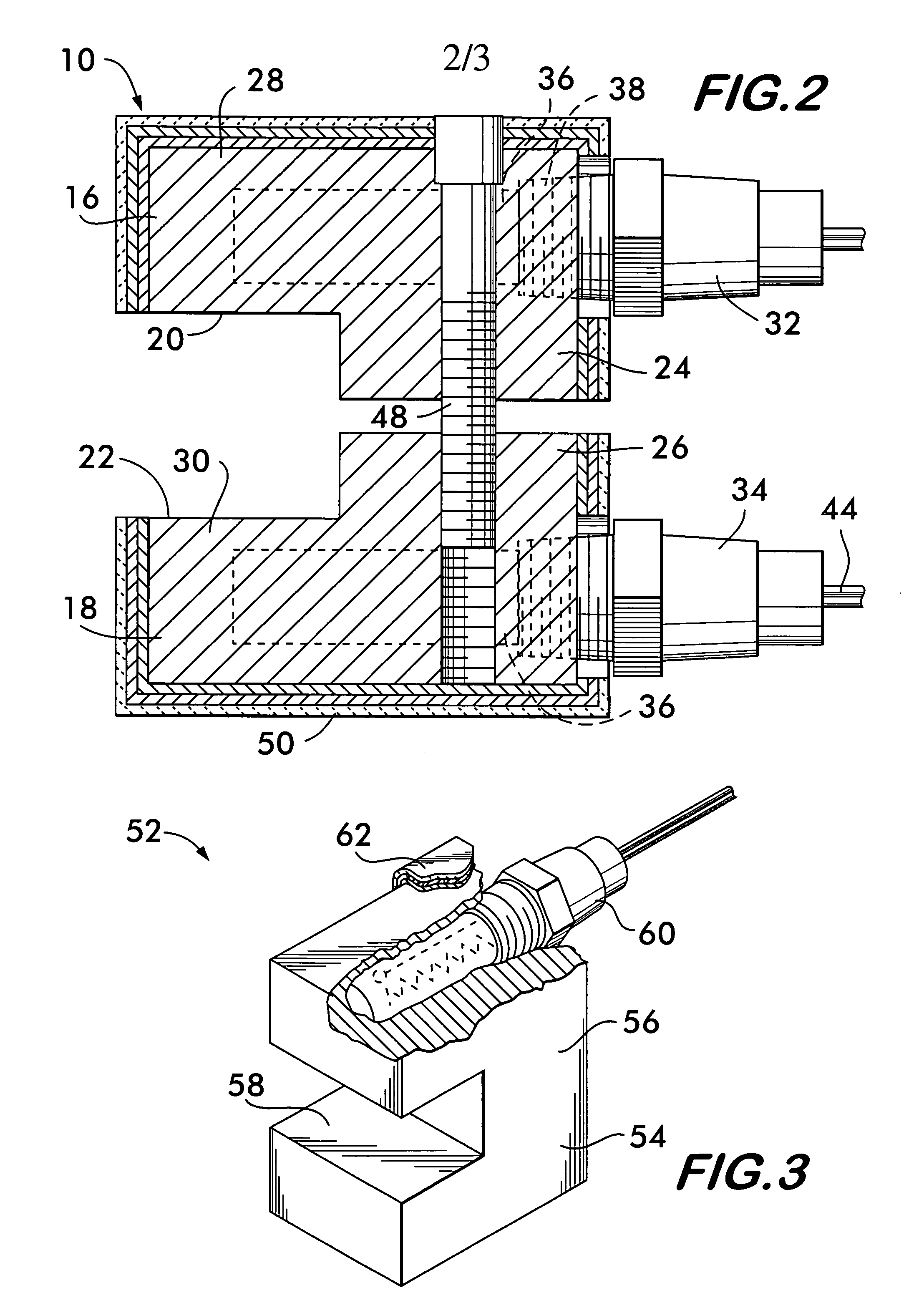Component heater
a heater and component technology, applied in the direction of lighting and heating apparatus, instruments, containers, etc., can solve the problems of rendering the valve inoperable and rendering it inoperabl
- Summary
- Abstract
- Description
- Claims
- Application Information
AI Technical Summary
Benefits of technology
Problems solved by technology
Method used
Image
Examples
Embodiment Construction
[0012]FIG. 1 illustrates a heating device embodiment 10 according to the invention in position surrounding a valve 12 on a gas cylinder 14, shown in phantom line. Heater 10 has a pair of jaws 16 and 18 formed from blocks of a heat conducting material, such as metal. Aluminum, brass, copper and steel are examples of metals that may be used to good effect to form the jaws. Each jaw has a heat transfer surface, 20 and 22 respectively (see also FIG. 2). The surfaces engage the valve 12 or other component to be heated, and effect heat transfer to the valve mainly through conduction. Each jaw 16 and 18 also has a massive portion, 24 and 26 respectively, which serve as heat reservoirs. The heat reservoirs, by virtue of their relatively large mass, allow the heater 10 to accommodate sudden and rapid heat transfer transients, as may be occasioned by the sudden and prolonged opening of the valve, while maintaining a relatively stable demand for electrical power. The reservoirs also mitigate l...
PUM
 Login to View More
Login to View More Abstract
Description
Claims
Application Information
 Login to View More
Login to View More - R&D
- Intellectual Property
- Life Sciences
- Materials
- Tech Scout
- Unparalleled Data Quality
- Higher Quality Content
- 60% Fewer Hallucinations
Browse by: Latest US Patents, China's latest patents, Technical Efficacy Thesaurus, Application Domain, Technology Topic, Popular Technical Reports.
© 2025 PatSnap. All rights reserved.Legal|Privacy policy|Modern Slavery Act Transparency Statement|Sitemap|About US| Contact US: help@patsnap.com



